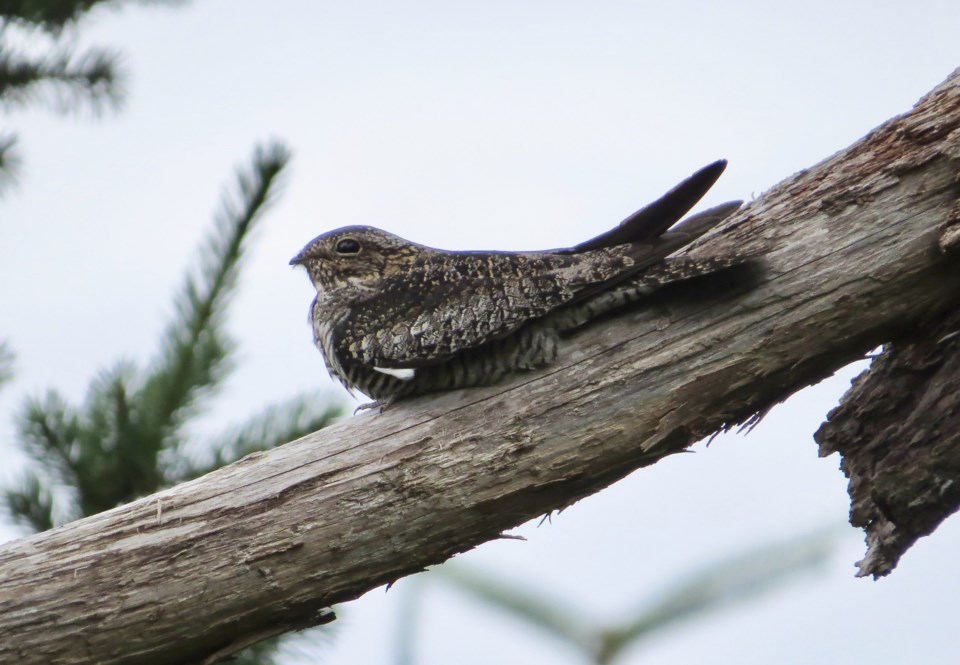The last piece of the spring migration jig-saw puzzle fell into place on the last day of May, when the first common nighthawk of the year was observed over Gospel Rock. The next few days were cool and wet, antithetical weather for insectivores, but the warmest temperatures of the year (mid-20C) on the 7th and 8th produced a rash of nighthawk reports. The birds will be with us through the summer before returning to South America. Nighthawks are most commonly observed on warm summer evenings in late July and August as they cris-cross the sky in a zig-zag flight. The birds nest singly in the hills, usually in regenerating clearcuts, but gather into flocks after breeding, to forage on summer evenings. Frequently, there may be 20 birds flying together, occasionally up to 100, and rarely over 250. Nighthawks are so-called because of their superficial resemblance to falcons (hawks) with long, pointy wings.
Looking back on the spring migration, the abundance of hermit thrushes and chipping sparrows has been notable. Hermit thrushes arrive on the Sunshine Coast in April and migrate through the lowlands before heading upslope to nest in the forest above 900m (c.3000 feet). Normally, a bird walk might detect one or two birds, but this year it could be double figures. Similarly, with chipping sparrow which has always been a very scarce migrant, but this year was commonly found. Furthermore, they are still being found in June, often at the same location, which may indicate that the birds are on breeding territory.
There is a caveat here! Birding is undergoing something of a boom right now, with many more people detecting birds and reporting their observations than at any previous time. This has been facilitated by the ubiquity of smart phones with the Merlin bird app and the E-bird platform for reporting sightings. So, there is a question of whether it is technology that is producing the uptick in numbers rather than an actual increase in the birds.
In passing I will say that I do not use Merlin (or similar apps) but I am amazed at this recent technology that can hear birds that you cannot hear and identify birds that you cannot identify. ‘Tis truly a brave new world we live in! Another caveat...Merlin is pretty good, but not infallible, so proceed with caution.
Two finch species have recently arrived for the summer on the Coast. Evening grosbeak is a bulky gold, black and white bird with a huge bill (grosbeak!) that often appears at feeders, especially if sunflower seeds are on offer. The other is red crossbill, which tends to stay in the treetops but is often detected flying overhead by its hard “jip, jip” flight call. If you see the bird note its crossed bill adapted for extracting seeds from cones.
To report your sightings or questions contact [email protected] or 604-885-5539. Good Birding.



